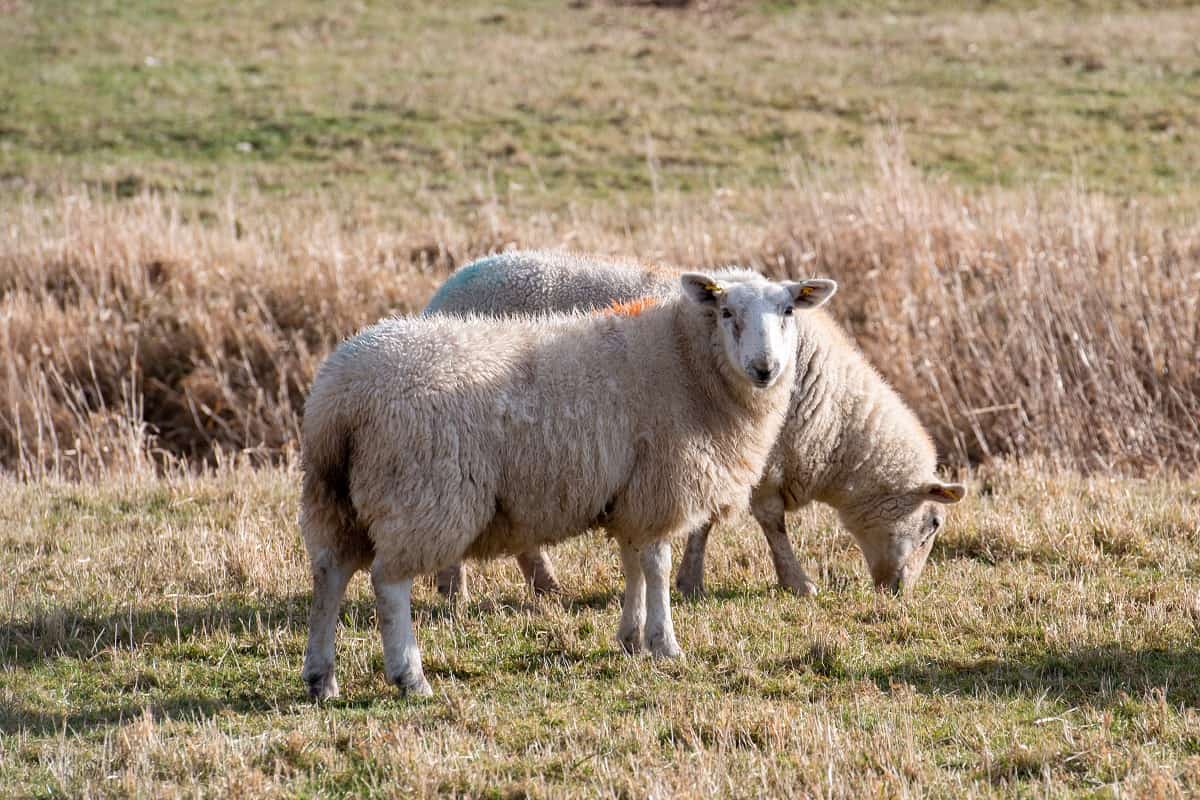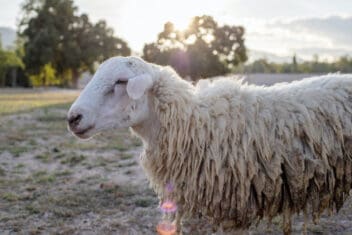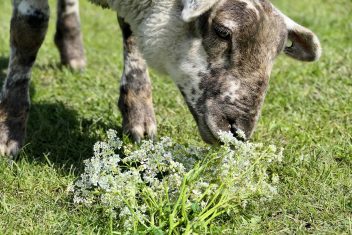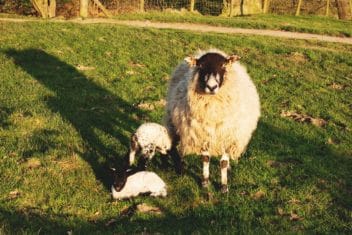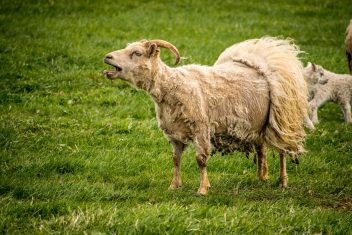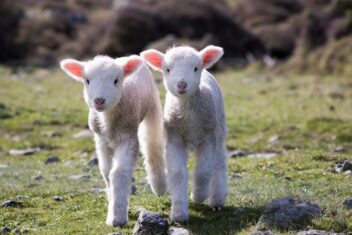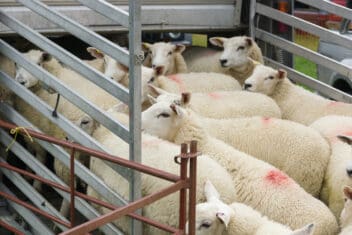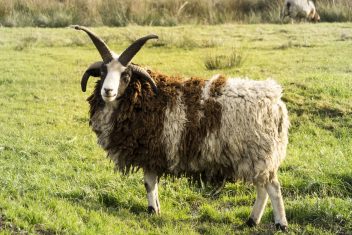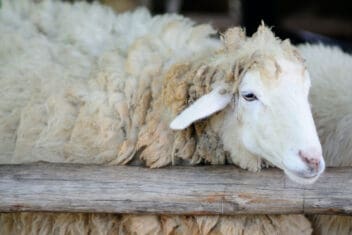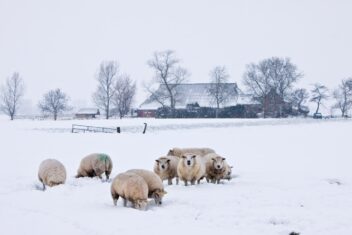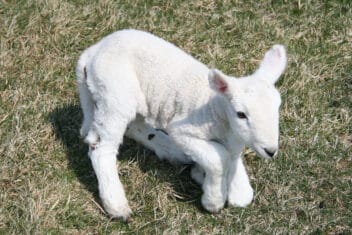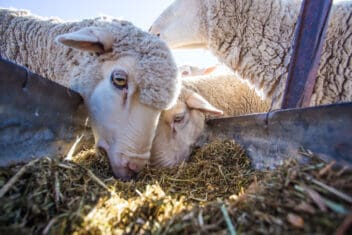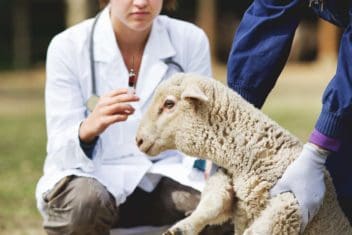For most people, fall is the time of year when things start to slow down. The leaves fall from the trees, the garden chores are more or less over, and even our work obligations might be slowing down.
However, in the life of a shepherd, there is no “slow” time of the year. There are still lots of tasks to tackle and chores that need to be done.
Although some sheep can breed year-round, most are what is known as “seasonal breeders.” Like deer and other animals who fall into this category, they only mate in the fall months.
The good news is that your rams and ewes are pretty much self-sufficient in this regard. Let them into the same paddock and soon enough, a little romance will happen.
However, there are a few things you have to know – and some preparations you need to make – if you are going to have a successful lambing season next year.
Here’s what you need to know about fall sheep maintenance, to ensure a successful breeding and lambing season.
When Do Sheep Breed?
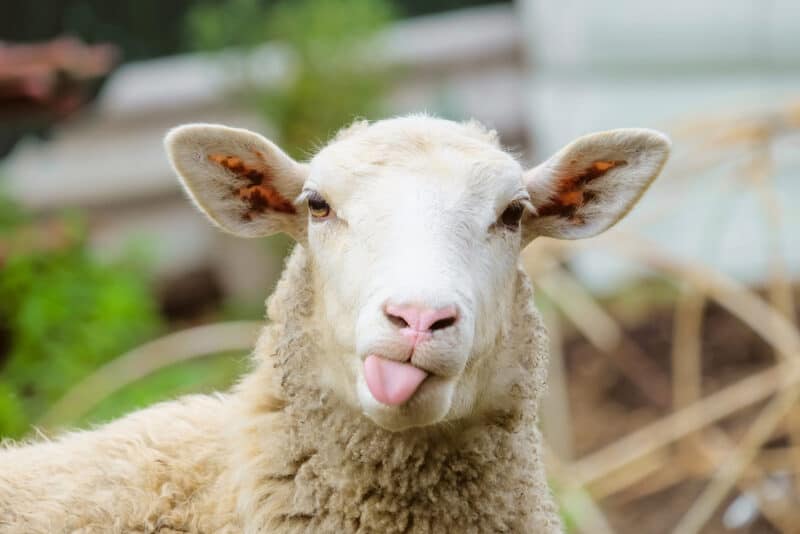
Most sheep breeds are seasonal breeders, meaning they breed when the day length starts to decrease.
For most sheep, that is in October and November.
The ewe has an estrus that lasts up to 36 hours, which is the period in which she will stand for breeding. These estrus cycles continue every 16-17 days until the ewe is bred. They can also stop when she has returned to anestrus.
There are some sheep breeds for which this is not the case. For example, Rambouillets, Horned Dorsets, and Merinos have extended breeding.
Steps to Ensure Successful Lambing
Again, your rams and ewes don’t need you to be involved in the breeding process.
However, there are some management tasks you might have to add to your to-do list to make sure next spring’s lambs are as healthy as can be.
1. Evaluate Body Condition
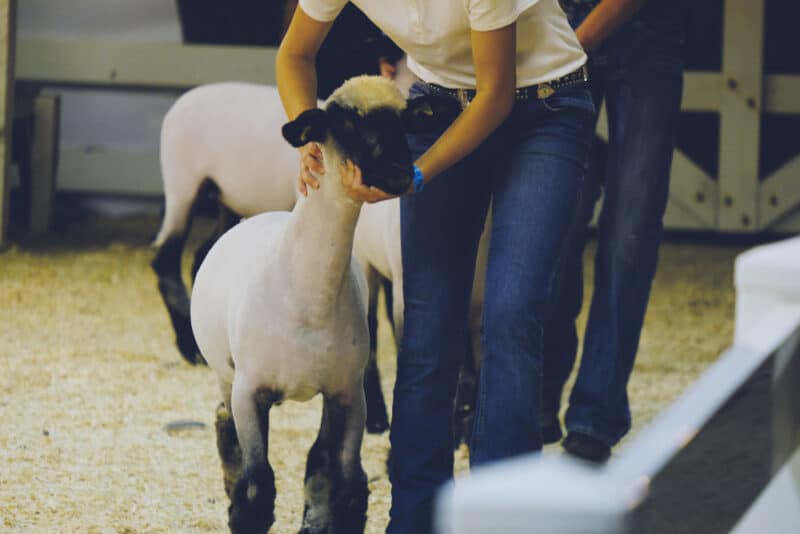
The first and most important thing you need to do when your sheep are getting ready to breed is to evaluate their body condition. This should be done for both ewes and rams.
Body condition scoring is a method that will help you determine the nutrition and genetics in a flock. You should score each sheep on a 5-point scale, with 1 being extremely thin and 5 being extremely fat. Ideally, the body condition should be a 3 – right in the middle!
Just before breeding isn’t the only time you should evaluate body condition.
This should also be done before lambing and right after your lambs have been weaned.
It’s a good chore to add to your flock maintenance checklist no matter the time of year since it can help you stay apprised of any issues that might pop up.
2. How to Evaluate Body Condition
To evaluate body condition, handle your sheep in the loin area. You’ll have to evaluate how much fat is across the back of the sheep and right along the vertical bone below the loin.
You should also take a look at how prominent the ribs and hip bones are by sight and feel. If you can see them, that’s a sign that your sheep is closer to a 1 on the body condition scale, and if you can feel them, it’s likely a 2. If you can feel the ribs but only when you apply some pressure, that’s ideal.
The sheep’s spine should not be visible along the top of the sheep. It should be covered with muscling.
Both the leg and loin muscles should be full and not atrophied.
Ideally, you should try not to breed sheep unless they are 3s or 4s. Ewes that are too fat or too thin may have trouble carrying lambs to term while rams might not have sperm counts as high as they could be.
If the weight is not ideal, aim to improve the body condition in either direction by 10% over the longest period possible. Being sure to monitor body condition throughout the year, and not just right before breeding, will give you plenty of time to make these changes if necessary.
3. Cull or Separate Non-Breeders
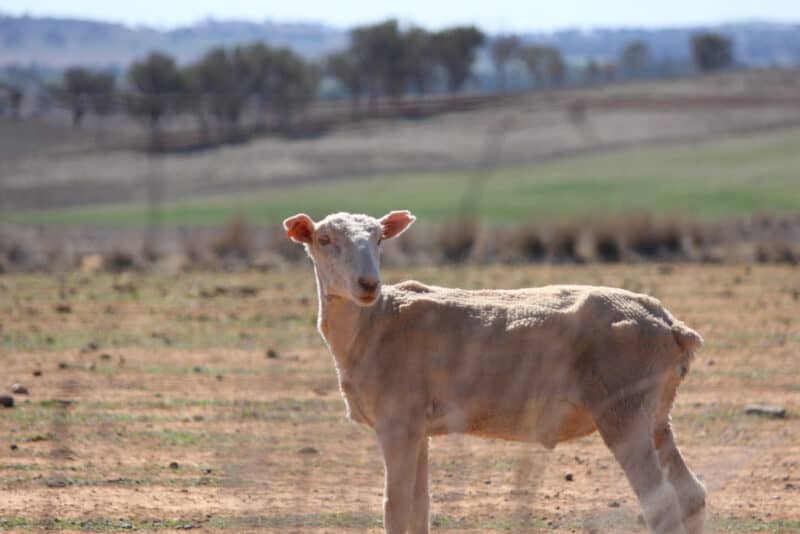
Now is a good time to determine which sheep should not be bred, too.
You should either cull or separate them so sheep with poor body conditions or known health problems are not bred.
4. Improve Feeding Strategy
After evaluating body condition, you can then take steps to improve your feeding strategy. If your sheep are underweight, you may need to increase the protein and energy content of their feed.
Many producers also flush their ewes. This sounds complicated, but is just the act of increasing nutrition right before breeding to encourage twinning. Start doing this about a month before introducing the ram to your ewes.
Once a ewe has more dietary energy and calories, her body condition will improve, telling her body that she can support more than one lamb. Her ovulation rate will increase and this should result in a higher lambing percentage as well.
To flush your ewes, all you need to do is add in a bit of grain at just half a pound to 1 pound per ewe, per day. You can also move the flock to better pastures, but this can be tough in areas where fall weather is unpredictable.
Corn or mixed grain can be used.
Keep supplying the additional calories until a few weeks after you’ve removed the ram. By this point, the embryos should be implanted.
Flushing isn’t something that should only be done for ewes.
Rams benefit from extra rations too because they can help them lose less weight and have added vigor during breeding.
5. Don’t Forget The Rams
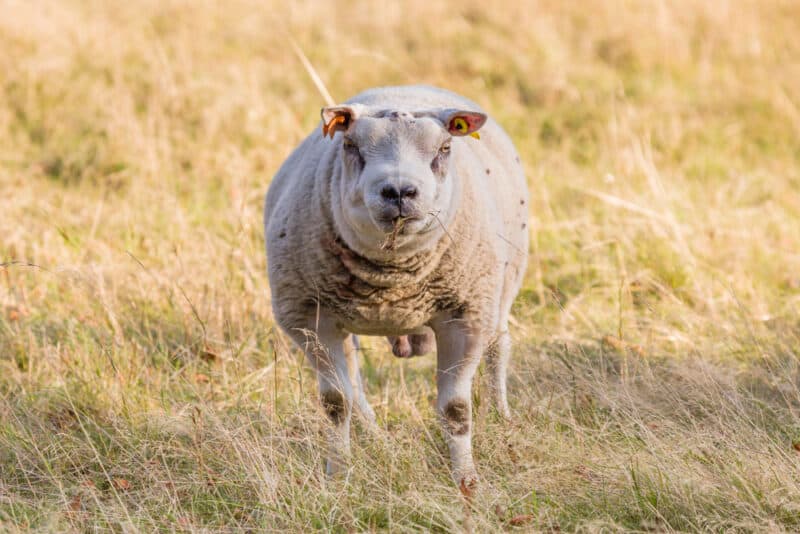
There are a few steps that need to be taken to address rams in the breeding season, too.
It is also important that you evaluate the body condition of any rams that will be used for breeding.
They should be vigorous and active. Those that produce wool should have high-quality fleece. Weight and body condition are just as important for rams as they are for ewes since those that are overweight lack proper libido and those that are underweight have poor semen quality.
You should also check the legs, feet, teeth, and eyes of the ram. Pay special attention to his testicles and epididymis. The testicles should be large (no less than 30-32 cm, depending on the ram’s age) and firm without any abscesses (these can indicate disease).
The epididymis, located at the bottom end of the testicle, is where the sperm is stored – so the health of this body part is important, too.
If you’re buying rams just for this season, do so at least a month before you plan to breed them.
That way, you can give the sheep time to adjust from any transport shock. The ram should also be quarantined to make sure it is not harboring any diseases from its original home.
Rams can become unpredictable and aggressive at this time of the year, even if they were previously friendly. Be cautious of this whenever you work with them.
6. Preparing the Living Quarters

The typical ram can service at least 5 ewes per day. This can vary depending on the age and health of your ram. You can use groups of rams in larger flocks, but if you plan on housing rams together, be very careful.
Rams often lunge at each other and fight, which can lead to injury. You can mitigate some of this by housing rams together a few days before breeding, but ultimately, the hormones may sometimes get the best of them.
Because of this, you might need to house rams in separate paddocks and with different breeding groups.
This can also ensure that all of your ewes are serviced if you aren’t sure about the volatility of one of your rams.
Again, a fertile adult ram can service at least 5 ewes per day, so he could theoretically service 150 ewes or more within a two-estrus cycle breeding season.
It’s not a great idea to expect one ram to service that many ewes, however. Ewes don’t cycle consistently. There’s a good chance that multiple ewes will be missed.
Therefore, it’s a better idea to ensure a ratio of no more than 50 ewes to one ram during the breeding season. If you’re using ram lambs, or those younger than one year, you should increase the coverage rate.
If you’re using multiple rams in the same breeding group (which is a good idea in some cases to ensure optimal coverage), make sure the living quarters are not confined.
There should be plenty of room to move around and lots of outdoor space.
7. Getting Other Sheep Maintenance Affairs in Order
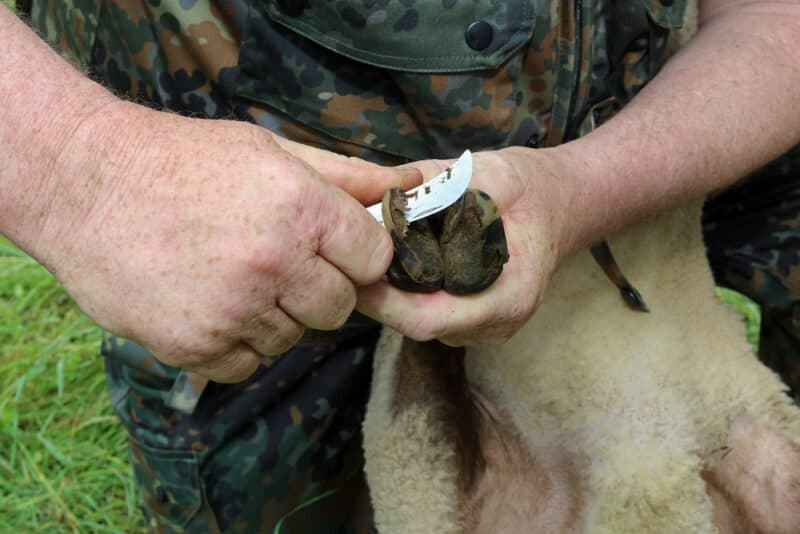
There are a few other things you will need to do before your sheep lamb, too.
One is to trim feet.
Avoid trimming the hooves of your ewes immediately after they have been bred.
Do it before breeding, if you can, since hoof trimming can stress your ewes and isn’t advised during the first trimester of pregnancy.
The same goes for other maintenance tasks, like deworming or shearing. Do it before breeding or wait until the middle or end of pregnancy. Do FAMACHA scoring for all sheep to assess whether you need to deworm.
Make sure you continue to provide all of your sheep with good nutrition (even with a grain supplement). Maintaining good body condition scores during the first 90 days of pregnancy will help ensure that all of your lambs survive – and are of adequate birth weight. Keep assessing body conditions as the pregnancies progress and you get closer to lambing.
Your ewes are doing all the hard work of carrying their lambs in utero. Now, for you, it is also a good time to get prepared.
Make sure you have a birthing kit filled with all the supplies you need for lambing and have the first possible dates for lambing marked on your calendar.
Here’s a post that can help you prepare yourself for the busy lambing season ahead!
Importance of Fall Sheep Maintenance
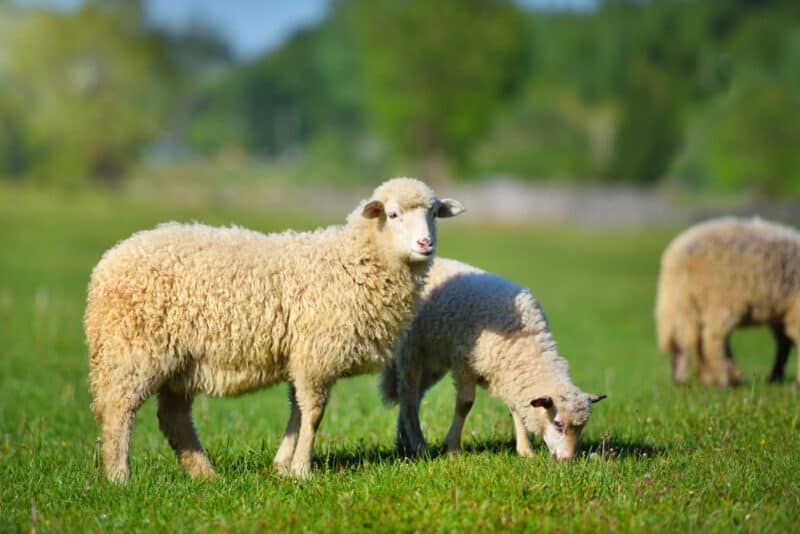
Being prepared for lambing is essential. That is, it’s essential if you want to ensure the health of your entire flock.
These fall preparations for breeding sheep will ensure that you are ahead of the eight ball – and that all of your ewes have successful, healthy pregnancies.
So get ready – breeding season is upon us!
